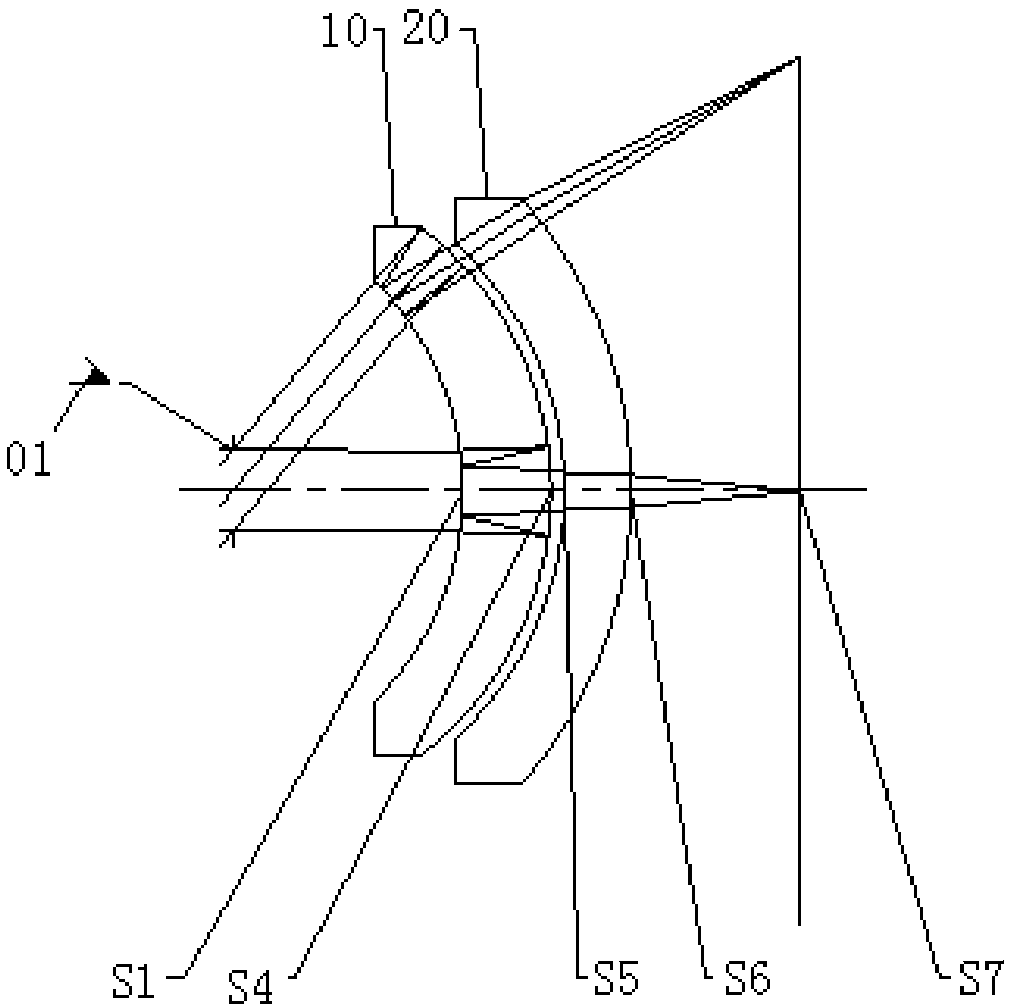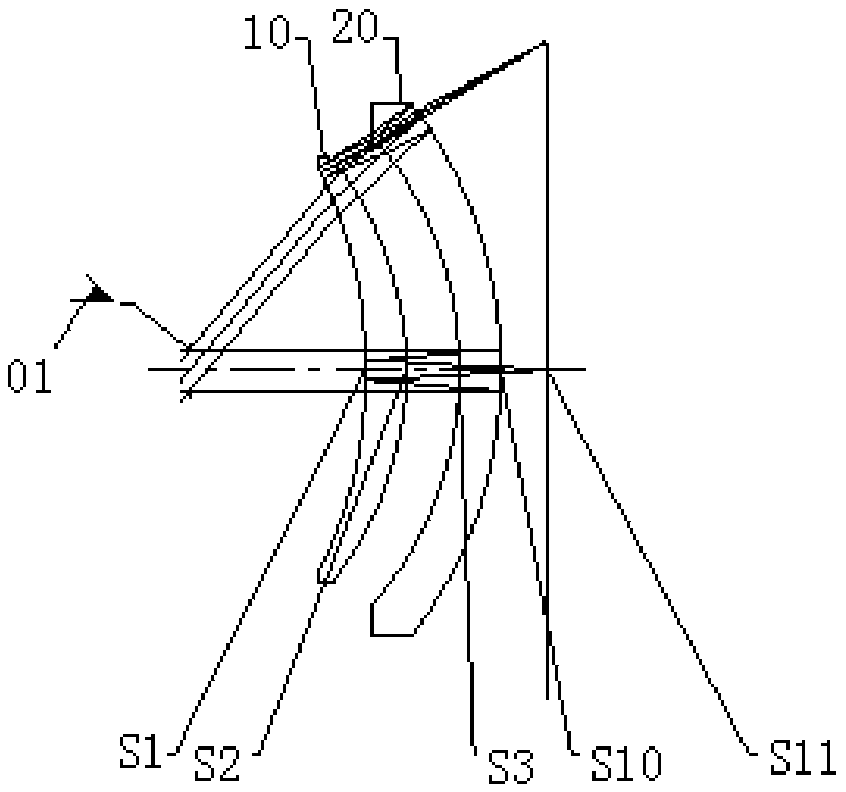Ocular lens and display device
A display device and eyepiece technology, applied in the optical field, can solve the problems of large chromatic aberration and distortion, the inability to meet the thinning and high performance of head-mounted equipment, and achieve the effect of reducing physical distance, reducing size, and realizing light and thin
- Summary
- Abstract
- Description
- Claims
- Application Information
AI Technical Summary
Problems solved by technology
Method used
Image
Examples
Embodiment 1
[0082] In the direction close to the image source, the eyepiece consists of a reflective circular polarizer, a first lens 10, a 1 / 4 lambda wave plate, a reflective linear polarizer and a second lens 20 arranged in sequence. For details, please refer to figure 1 , the figure does not show the radial linear polarizer, reflective circular polarizer and 1 / 4λ wave plate.
[0083] The optical path of this embodiment can refer to figure 1 As shown, from the side of the human eye 01, the light passes through S1 in sequence, and after two reflections in the middle, it reaches the imaging surface S7. The parameters of each optical surface are shown in Table 1, wherein, S1 represents the first surface of the first lens 10, S2 represents the reflective surface of the reflective linear polarizer, S3 represents the reflective surface of the reflective circular polarizer, and S4 represents the first The second surface of the lens 10, S5 represents the first surface of the second lens 20, S6...
Embodiment 2
[0090] In the direction close to the image source, the eyepiece consists of a reflective circular polarizer, a first lens 10, a 1 / 4 lambda wave plate, a second lens 20 and a reflective linear polarizer arranged in sequence. For details, please refer to image 3 , the figure does not show the radial linear polarizer, reflective circular polarizer and 1 / 4λ wave plate.
[0091] The optical path of this embodiment can refer to image 3 As shown, from the side of the human eye 01, the light passes through S1 in sequence, goes through two reflections in the middle, and reaches the imaging surface S11. The parameters of each optical surface are shown in Table 2, wherein, S1 represents the first surface of the first lens 10, S2 represents the second surface of the first lens 10, S3 represents the first surface of the second lens 20, and S4 represents the reflection type The reflective surface of the linear polarizer, S5 represents the first surface of the second lens 20, S6 represent...
Embodiment 3
[0099] In the direction close to the image source, the eyepiece consists of a reflective circular polarizer, a first lens 10, a 1 / 4 lambda wave plate, a reflective linear polarizer and a second lens 20 arranged in sequence. For details, please refer to Figure 5 , the figure does not show the radial linear polarizer, reflective circular polarizer and 1 / 4λ wave plate.
[0100] The optical path of this embodiment can refer to Figure 5 As shown, from the side of the human eye 01, the light passes through S1 in sequence, and after two reflections in the middle, it reaches the imaging surface S9. The parameters of each optical surface are shown in Table 3, wherein S1 represents the first surface of the first lens 10, S2 represents the second surface of the first lens 10, S3 represents the reflective surface of the reflective linear polarizer, and S4 represents the first surface of the first lens 10. The second surface of the lens 10, S5 represents the reflective surface of the re...
PUM
 Login to View More
Login to View More Abstract
Description
Claims
Application Information
 Login to View More
Login to View More - Generate Ideas
- Intellectual Property
- Life Sciences
- Materials
- Tech Scout
- Unparalleled Data Quality
- Higher Quality Content
- 60% Fewer Hallucinations
Browse by: Latest US Patents, China's latest patents, Technical Efficacy Thesaurus, Application Domain, Technology Topic, Popular Technical Reports.
© 2025 PatSnap. All rights reserved.Legal|Privacy policy|Modern Slavery Act Transparency Statement|Sitemap|About US| Contact US: help@patsnap.com



